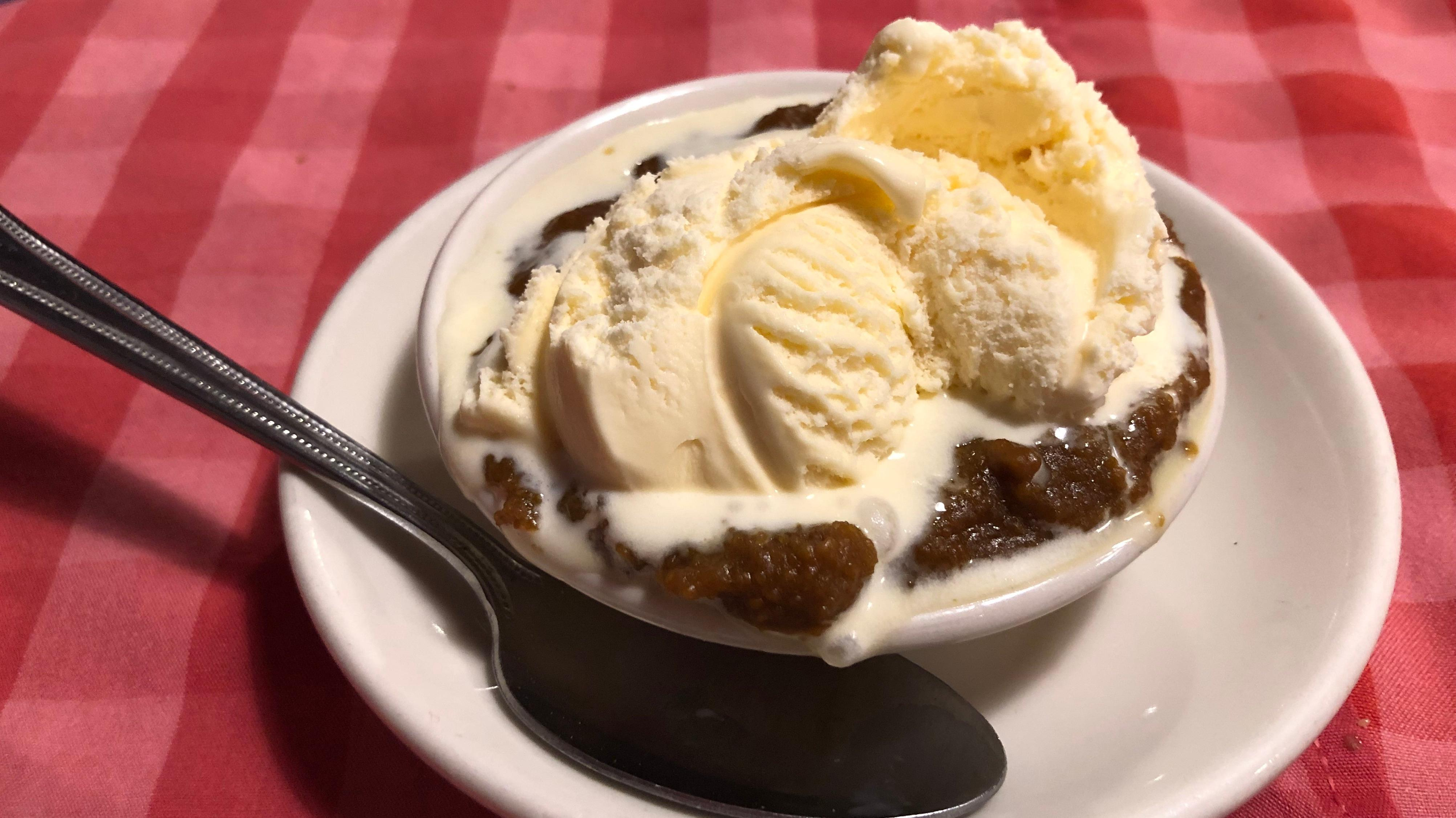New England's Ugliest Dessert Is One Of Its Best
Indian pudding dates back to the earliest English settlers to the region.
On the whole, New England is praised for its aesthetics, but the food isn't. We've got our fried clams and clam cakes, our boiled dinners, our lobsters served in every possible preparation. It's all very delicious, if you've got the right appetite for it. But it is definitely not beautiful.
Without question, the least visually appealing of all of our offerings is Indian pudding. It's a gooey, bubbling mess of viscous brown liquid, runny when hot and gelatinous when cold. It's also one of the most delicious, comforting, quintessentially New England foods you can eat.
A brief history of Indian pudding
There's no official first recipe for Indian pudding, but the dish dates as far back as early English settlements in New England, which started on Cape Cod in 1620 and quickly grew to include Boston and the surrounding area. English settlers brought with them a common recipe: hasty pudding, a porridge made with flour, milk, and sugar and served as a side dish.
Flour was in short supply for settlers, but cornmeal was easier to come by. Corn is a native crop, introduced to the colonists by the Nauset and Wampanoag tribes of coastal Massachusetts; the settlers called cornmeal "Indian meal." It was also easier to source molasses than the sugar that hasty pudding called for. Molasses is a byproduct of the rum distilling process, and New England had ready access to the sweet syrup because there was so much of the spirit being made in the region. New England was one of the points of the triangle trade, which brought enslaved people from Africa to the Caribbean and South America, then took sugar cane from those areas to New England to be made into rum, which was then transported back to Africa.
In its earliest iterations, Indian pudding was sometimes a savory side dish with meat cracklings in it, but was more often a dessert, baked in the embers of the hearth fire where women prepared the day's food. Over time, the slow-baked dish was handed down through generations and evolved into something that includes butter and eggs, and sometimes cinnamon and ginger. Think of it sort of like the softest molasses cookie you've ever had, served hot and topped with vanilla ice cream (or, for people who do it wrong, whipped cream).
Imogene Woolcott, the first food editor for New England's venerable Yankee magazine, wrote The Yankee Cook Book in 1939. It was a compilation of Yankee recipes as well as recipes sent in from all over the region, which she described as "the finest plain cooking in the world." In the book, Woolcott ranked the "most typical" New England dishes.
"I am basing the popularity of these dishes on the number of recipes sent in as a result of my daily radio broadcasts over the Yankee Network in Boston," she wrote. "For example, I received 377 recipes for baked Indian pudding—more than for any other one dish. So, naturally, it heads the list."
Where to eat Indian pudding in New England
Though Indian pudding isn't as popular as it once was, it's still around, at least in a few places. You can order it for dessert at Longfellow's Wayside Inn in Sudbury, Massachusetts, which has been a tavern since 1716 and claims to be America's oldest inn. At the Maine Diner in Wells, Maine, it's still on the menu, where it gets a little blurb of explanation in a way that apple crisp and bread pudding don't. It is, though, still beloved enough in some circles that there's a National Indian Pudding Day every year on November 13.
At the Union Oyster House in Boston, a National Historic Landmark and America's oldest continuously serving restaurant, Indian pudding has been on and off the menu—but mostly on—since it started serving food in 1826.
"This is an institution restaurant," says Executive Chef Rico DiFronzo. "When people come to Boston, they expect to find certain things. As a classic seafood restaurant and an old restaurant, we have things on our menu that a lot of restaurants don't even think about serving, such as Indian pudding."
"If they're history buffs," DiFronzo adds, "they want to see this kind of food. That's what makes it special."
In the restaurant's archives, there are menus from 1850 with pies listed as the only desserts, but the menus from the 1930s and '40s include Indian pudding as a dessert offering. To DiFronzo's knowledge, the restaurant has been using the same recipe for at least 50 years, if not longer.
"This particular restaurant is known for history, and that's part of what it is," he says. "So as chef of this restaurant, I'm kind of a caretaker of our food history." The pudding is temporarily off the menu due to trimmed-down pandemic offerings, but, DiFronzo says, "We've had people asking for it. There's still a demand." (Durgin-Park, another storied Boston restaurant famous for its Indian pudding, opened in 1827 but closed for good in 2019.)
Part of why the dish has fallen out of fashion is that, besides looking gross, it takes hours to prepare. The mixture comes together in minutes but then bakes for several hours at low temperature. I have cherished memories of cold winter nights when the house would be cozy from the warmth of the oven, the air filled with the scents of cinnamon and ginger. We'd eat Indian pudding straight out of the oven, topped with vanilla ice cream that would immediately cool it down and add a creamy texture to the dish. Leftovers would keep for days afterwards. It's exactly the kind of cooking New England's settlers did three and four hundred years ago, in the same place they did it. It's hard to tell if it tastes more like history or home.
